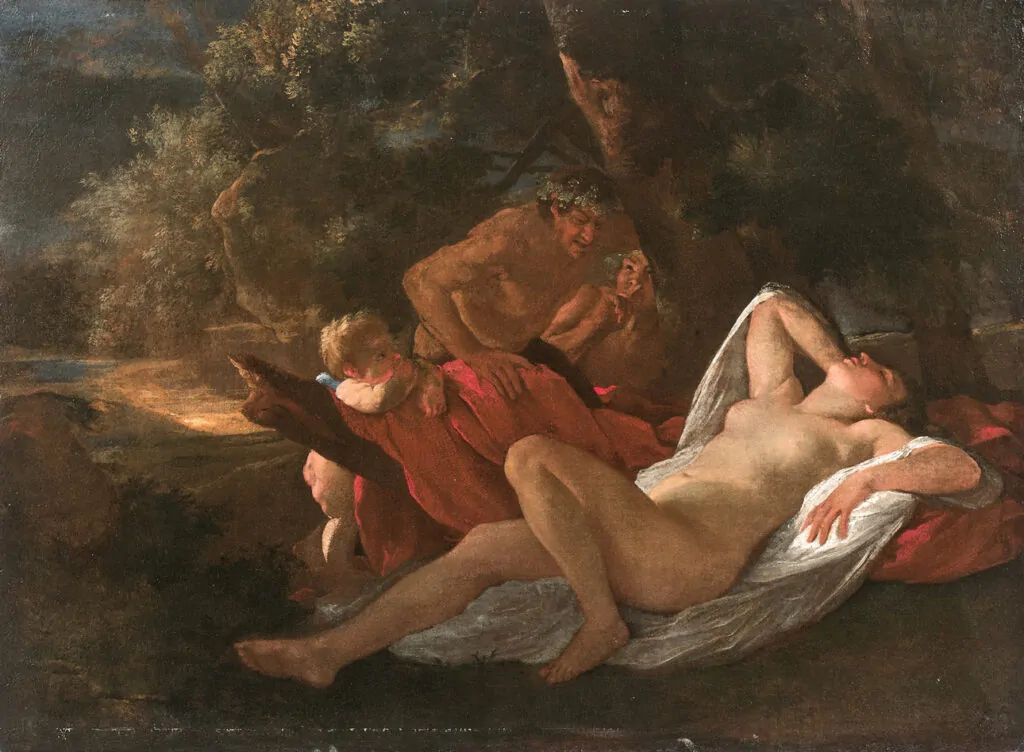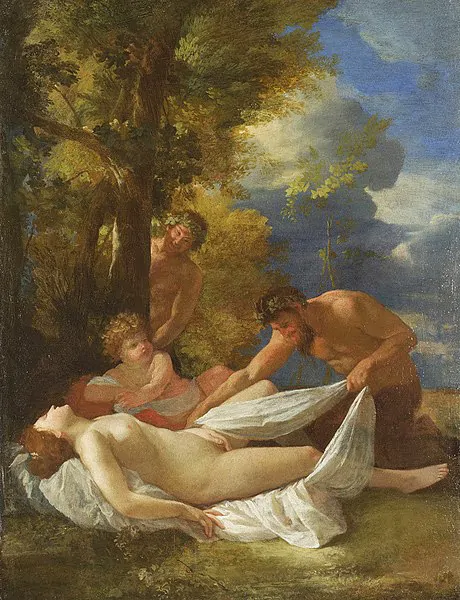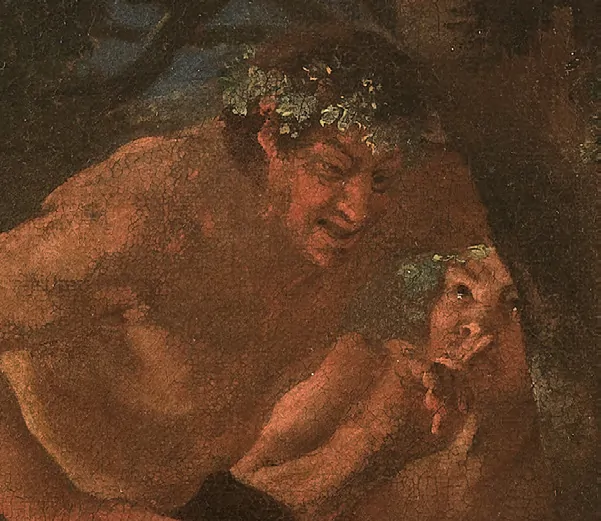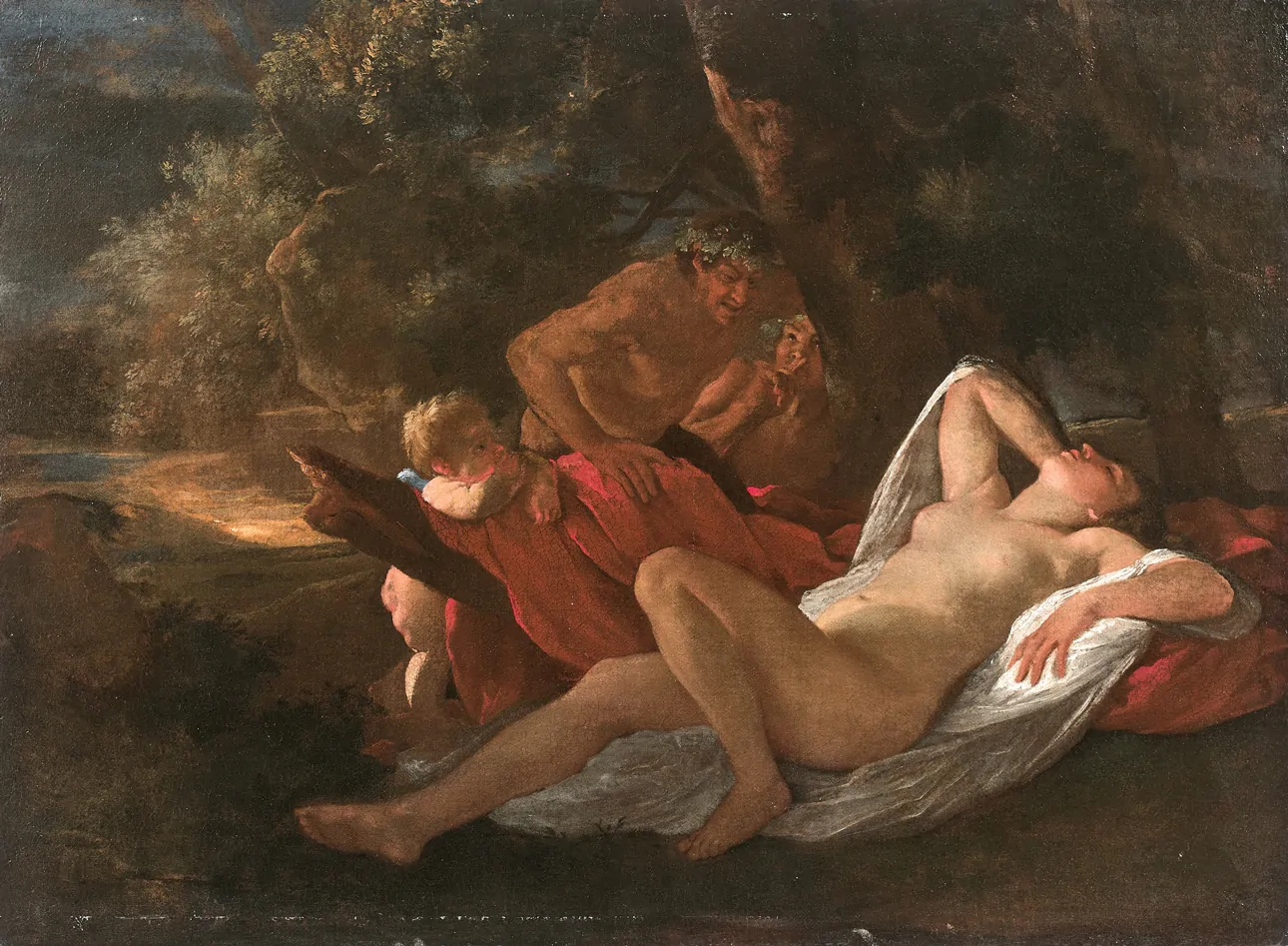SALE: TABLEAUX ANCIENS
Tuesday 26 November 2024 at 2 PM
Hôtel Drouot – Salle 6
9, rue Drouot
75009, Paris
On 26 November 2024, the French auction house of Ader, with the assistance of Cabinet Turquin, will be selling an early painting by Nicolas Poussin, Vénus Épiée par Deux Satyres (Venus Spied Upon by Two Satyrs). Estimated between €800,000 and €1,000,000, this large canvas measuring 70 x 95.5 cm, with its erotic subject matter, is completely different from the more classical works that one expects of Nicolas Poussin. The works of this artist are exceedingly rare on the art market, and this work, only recently rediscovered, is being sold in Paris at Hôtel Drouot.

Vénus épiée par deux satyres Toile
Hauteur : 70 cm
Largeur : 95,5 cm
800 000 / 1 000 000 €
One simply doesn’t find paintings by Poussin from this period, with this theme
and of these dimensions on the market.French auctioneer David Nordmann
This work, published by the historian Tancred Borenius in 1933, was once in the collection of Paul Jamot, chief curator of the Musée du Louvre and a specialist in Poussin, until its sale in 1943. Held in private collections since that date, this Venus Épiée par Deux Satyres was known only through a black-and-white photograph.

Vénus épiée par deux satyres, vers 1626,
huile sur toile, Kunsthaus, Zurich.
Based on this photograph, the painting was rejected by Anthony Blunt in the 1960s but was later cited by Jacques Thuillier as possibly being by Poussin. It was in 2017, with the publication of an article by Nicolas Milovanovic and Mickaël Szanto, as well as a meticulous restoration, that definitively placed this painting within the early oeuvres of Nicolas Poussin, among numerous canvases of similar subject matter dating from 1625-1627.
This rediscovery culminated in last year’s exhibition at the Musée des Beaux Arts in Lyon, Poussin et l’Amour, in which our painting featured prominently between the equally erotic Venuses from the Kunsthaus in Zurich and the National Gallery in London.

Vénus épiée par deux satyres, vers 1626
The National Gallery, Londres.
The three paintings, which are very similar, all date from the years 1625-1626.
The painting will be included in Pierre Rosenberg’s forthcoming Poussin catalogue raisonné.
An Early Work by Nicolas Poussin
Nicolas Poussin arrived in Rome in 1624. Influenced by Titian and Carracci, he liked to paint mythological scenes of amorous encounters. The very subtle colours and the delicate brushstroke of the present painting, as well as the importance of light, used to define the position of each figure within the composition, are characteristic of the works of Poussin in the years 1625 to 1627.

Vénus épiée par deux satyres Toile (detail)
Hauteur : 70 cm
Largeur : 95,5 cm
800 000 / 1 000 000 €
Our painting, with its highly pictorial approach, can therefore be dated to around 1626. Having passed through Venice before settling in Rome, Poussin took up the theme of the nymph sleeping in the woods surprised by satyrs which was omnipresent in Venetian 16th century painting.
The rosy complexion of the goddess, contrasting with the rough and lustful faces of the satyrs confers a vivid sensuality to the painting. Poussin’s licentious imagery later disappeared, giving way to more classical subjects.

Vénus épiée par deux satyres Toile (detail)
Hauteur : 70 cm
Largeur : 95,5 cm
800 000 / 1 000 000 €
A New Light Is Shed on an Aspect of Poussin’s Work
From the 18th century onwards, the erotic dimension and underlying violence in this scene of voyeurism were simply too blatant for the painting to be attributed to Nicolas Poussin. ‘We couldn’t imagine that Poussin would have painted a subject like this in 1626,’ says expert Eric Turquin.
The evolution in the way Poussin’s work is viewed, and the reconsideration of art historians, have led to this work being restored to its rightful place, making this Venus an essential milestone between the Venetian eroticism of the 16th century and the renaissance of eroticism in French painting in the 18th. The years 1620–1630 were a pivotal period during which Poussin enjoyed painting erotica before becoming one of the masters of classicism.
‘The pictorial quality, the freedom of the brushstroke, the subtle tonality that envelops the body of the goddess, the rendering of the volume of the satyrs’ flesh through the singular use of the reserve allow it to be included without question among the French master’s works produced around 1626.’
— Mickaël Szanto (exhibition catalog Poussin et l’Amour)
Nicolas Poussin’s Vénus Épiée par Deux Satyres opens at Auction on the 26th of November, 2024 at Ader
©2024 Ader




